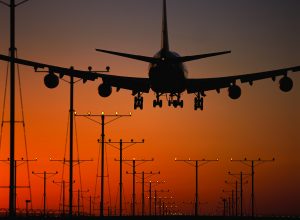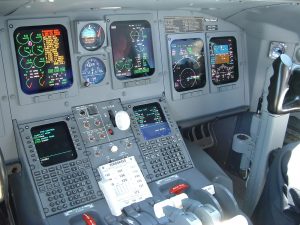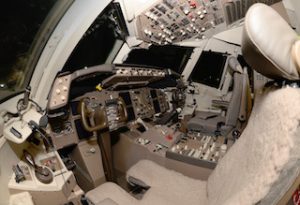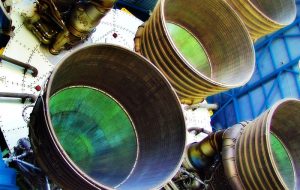Development And Features Of Boeing 777 Jet
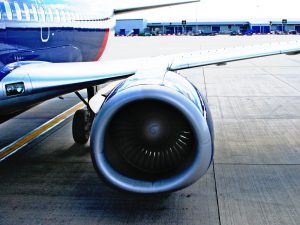 The Boeing 777 jet is one of the most recognizable aircraft in the world. Since its introduction, it has become a favorite among airlines and passengers alike. The aircraft’s efficiency, range, and comfort make it an essential component of modern air travel. The 777’s development revolutionised the aviation industry, bringing advanced technology and design to commercial flights.
The Boeing 777 jet is one of the most recognizable aircraft in the world. Since its introduction, it has become a favorite among airlines and passengers alike. The aircraft’s efficiency, range, and comfort make it an essential component of modern air travel. The 777’s development revolutionised the aviation industry, bringing advanced technology and design to commercial flights.
Development of Boeing 777 jet
Boeing launched the 777 jet program in the early 1990s to fill the gap between the 747 jumbo jet and smaller aircraft like the 767. Its design focused on long-range flights, greater passenger comfort, and reduced operating costs. The Boeing 777 jet is the initial commercial aircraft designed entirely using computer-aided design software, which allowed for more precise engineering and better performance.
The 777 was initially introduced in 1995 with the 777-200 model. It quickly gained popularity due to its ability to serve long-haul routes efficiently. Boeing later expanded the 777 family with different variants to cater to various airline needs. These models include the 777-200ER, 777-300, 777-300ER, and 777X. The Boeing 777X is the latest addition and promises even more improvements in fuel efficiency and passenger comfort.
Features of Boeing 777 Jet
The Boeing 777 jet stands out for several reasons. It boasts a range of up to 15,000 kilometers (9,300 miles), making it suitable for long-haul flights. The 777 has a wingspan of 199 feet and 11 inches (61 meters) in the standard configuration, with the 777X variant featuring folding wingtips that increase this span to 235 feet (71 meters). The larger wingspan enhances fuel efficiency and provides a smoother flight experience.
The jet can accommodate between 314 and 396 passengers, depending on the model and cabin configuration. The 777-200, for example, typically carries around 314 passengers, while the 777-300 can seat up to 396. Passengers enjoy spacious cabins, with many airlines opting for wide seats and enhanced amenities in economy and premium classes.
Engine technology in Boeing 777
The Boeing 777 is powered by 2 high-thrust turbofan engines, either the Pratt & Whitney PW4000, Rolls-Royce Trent 800, or the General Electric GE90 series. The GE90 engine, in particular, has set records as one of the world’s most powerful commercial engines. It produces over 115,000 pounds of thrust, allowing the 777 to achieve impressive speed and range.
These engines are designed for maximum fuel efficiency, reducing operational costs for airlines. The advanced engine technology also ensures lower noise levels during takeoff and landing, contributing to a quieter flight experience for passengers and less disturbance in airport environments.
Boeing 777 jet’s fuel efficiency
Fuel efficiency is the standout feature of the Boeing 777 jet. Compared to older aircraft models, the 777 offers a 20% improvement in fuel consumption per seat. This efficiency is achieved through the combination of advanced engines, lightweight materials, and aerodynamic enhancements.
The development of new engines for the Boeing 777X continues this trend, with the introduction of the GE9X engine, which promises a further 10-15% improvement in fuel efficiency. Airlines operating the Boeing 777 fleet can reduce fuel costs, contributing to lower ticket prices and better profitability.
Comfort of Boeing 777 Jet
Passenger comfort is a key consideration in the design of the Boeing 777 jet. The spacious cabin and wider seats enhance the overall flying experience, particularly on long-haul routes. The 777 also features a quieter cabin, thanks to its advanced engine technology and noise-reducing materials used in the construction.
The interior of the Boeing 777 varies depending on the airline’s specifications. Many airlines choose to install larger windows, improved lighting systems, and ergonomic seating arrangements. Airlines also often include features like mood lighting, air filtration systems, and personal in-flight entertainment screens, which all contribute to a more comfortable journey.
In terms of cabin configurations, airlines usually offer three classes: economy, business, and first class. Business and first-class passengers typically enjoy more spacious seats that recline into fully flat beds, as well as access to premium services such as gourmet meals and private lounges.
Boeing 777 jet’s role in global aviation
Since its introduction, the Boeing 777 has become a workhorse for many airlines, playing a significant role in global air travel. Its efficiency and ability to serve both short and long routes make it ideal for a wide variety of destinations. Airlines around the world use the 777 for major international routes, connecting cities across continents.
The 777 is especially popular for transatlantic and transpacific flights. Its large capacity makes it ideal for high-demand routes, while its fuel efficiency reduces operating costs. Airlines that use the Boeing 777 benefit from lower fuel consumption and a wider seating capacity, which improves profitability on long-haul flights.
The jet is also increasingly used in cargo operations. Many cargo carriers operate freighter versions of the Boeing 777, capitalizing on its long range and large cargo hold. This enables the efficient transportation of goods between global hubs, especially for industries like electronics, pharmaceuticals, and perishable goods.
Boeing 777 jet variants and their differences
Boeing offers several variants of the 777 jet, each designed to meet specific airline needs. The primary models in the 777 family are the 777-200, 777-200ER, 777-300, 777-300ER, and the 777X. Each variant is designed for different route lengths, capacities, and operational needs.
The 777-200 is the base model, designed for shorter to medium-range routes. The 777-200ER offers extended range, making it ideal for long-haul flights. The 777-300, with its longer fuselage, offers greater passenger capacity, while the 777-300ER offers both extended range and higher efficiency for longer distances.
The 777X is the latest iteration in the series, featuring enhanced aerodynamics, a larger wingspan, and the new GE9X engines. This variant offers further improvements in fuel efficiency and passenger comfort, along with a quieter cabin and larger windows.
The next generation
The Boeing 777X is an advanced version of the Boeing 777 family, offering a variety of technological advancements. This aircraft features a wider wingspan, folding wingtips, and new engines designed for even greater fuel efficiency. The 777X is expected to enter service in the coming years, further solidifying the Boeing 777 as the leader in long-haul commercial aviation.
The introduction of the 777X will help airlines reduce operating costs while providing passengers with an enhanced travel experience. Its larger wingspan and aerodynamic improvements will allow it to achieve better fuel efficiency and quieter flights. The 777X will also offer new interior options, including improved cabin features and enhanced amenities for premium passengers.
A global favorite
The Boeing 777 is used by airlines around the world, with numerous major carriers relying on the aircraft for their long-haul routes. Some of the most prominent airlines that operate the Boeing 777 include Emirates, Qatar Airways, United Airlines, British Airways, and Singapore Airlines. These airlines use the 777 for their most popular international routes, connecting passengers to destinations across Europe, Asia, North America, and beyond.
Many airlines prefer the 777 for its proven reliability and cost-efficiency. The aircraft’s ability to carry a large number of passengers over long distances with minimal fuel consumption makes it a valuable asset for carriers looking to maximise their profits on high-demand routes.
Safety and maintenance
Safety is a key priority in the design and operation of the Boeing 777. The aircraft is equipped with advanced avionics, flight control systems, and redundancy features to ensure safe operation in all conditions. The 777’s design has been rigorously tested to meet the highest safety standards set by regulatory authorities such as the Federal Aviation Administration (FAA) and the European Union Aviation Safety Agency (EASA).
In addition to its safety features, the Boeing 777 is known for its ease of maintenance. The aircraft is designed for long-term durability, and its components are built to withstand frequent use. Airlines can rely on the 777’s robust maintenance schedule, which ensures the aircraft remains in top condition throughout its operational life.
Environmental impact
The environmental impact of aviation is a growing concern. The Boeing 777 jet helps address this issue through its improved fuel efficiency and reduced emissions. Compared to older aircraft models, the 777 produces fewer greenhouse gases per seat, making it a more environmentally friendly option for airlines.
The development of the 777X will further improve the aircraft’s sustainability. The new engines, combined with advanced materials and aerodynamics, will reduce the carbon footprint of the aircraft. As airlines face increasing pressure to reduce their environmental impact, the Boeing 777 remains an excellent choice for eco-conscious carriers.
Enduring legacy
The Boeing 777 jet remains a leader in the commercial aviation industry. Its combination of range, fuel efficiency, passenger comfort, and safety makes it a favorite among both airlines and passengers. The aircraft has proven its worth over decades of service and continues to evolve with new variants like the 777X.
As airlines continue to invest in newer, more fuel-efficient aircraft, the Boeing 777 will remain a cornerstone of global air travel. Its legacy as one of the most successful aircraft ever built is secure, and it will likely continue to play a pivotal role in the aviation industry for years to come.
A continued legacy of innovation
The Boeing 777 jet has cemented itself as a staple of the aviation industry. As newer models like the 777X enter service, this iconic aircraft continues to evolve. The advancements in fuel efficiency, technology, and passenger experience ensure that the Boeing 777 will remain a top choice for airlines worldwide. Its ongoing success highlights the ongoing innovation in commercial aviation, ensuring a bright future for the 777 family in the years ahead.


